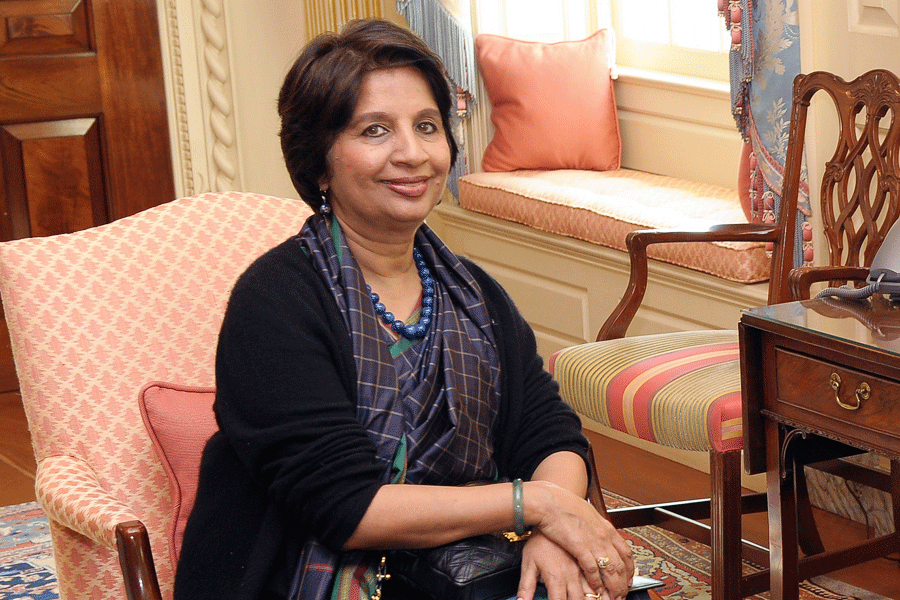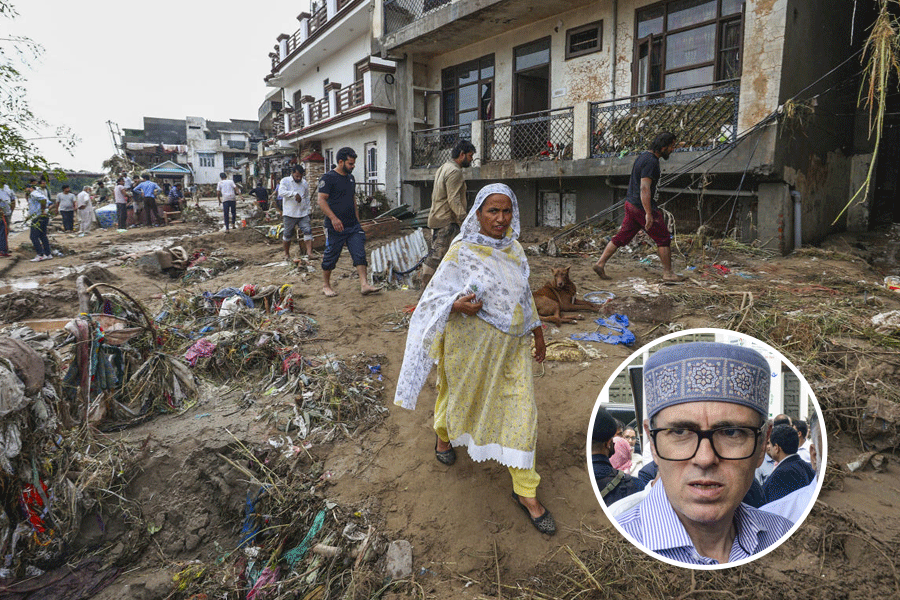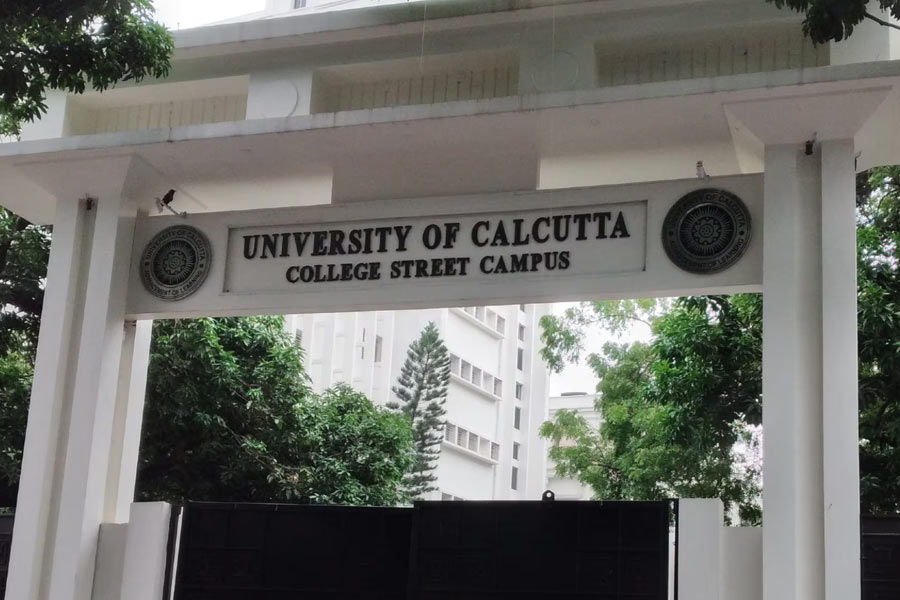 |
And trembling, shrinking from the spoiler’s hand,/ Far, far away thy children leave the land./ Ill fares the land, to hastening ills a prey,/ Where wealth accumulates, and men decay:
Oliver Goldsmith’s knowledge of India must have been less than minimal. And he was certainly not thinking of a future Hindostan when he wrote those lines in “The Deserted Village”. But I have often thought of his depiction as made for our times, our Indian times.
Near the flat my wife and I have rented in Chennai, three ‘independent’ houses have been given over to high-rise. They were not old patrician buildings whose demise is to be regretted aesthetically. The new ones coming in their places are not hideously ugly, either, as they could well have been. A lovely copper-pod tree in one of those houses which could have yielded to built-up square footage has been spared the axe , an incredible thing. So there is nothing remarkable about this landscape morphing, and certainly nothing to be very regretful about.
But this construction triplet has brought something else to the suburb which is new. It has brought unheard-of dialects of Hindi to a part of Chennai where only Tamil and English held sway. Construction workers from the coal-mining tracts of central and eastern India have set up camp in Tiruvanmiyur and, with seemingly effortless ease, are raising buildings, floor by floor, for people with whom they do not have even a language in common.
These are the migrant workers we speak and write about, the flotsam of India’s booming construction industry and the jetsam of India’s urban sprawl.
In Coonoor, the lovely little hill town in the Nilgiris, where we own a cottage, I can hear the same east India dialects being spoken alongside Tamil and the languages that the local Badaga and Toda speak. If the Roerichs could paint as they did in the Himalaya, an Elwin could study and write as he did in the Northeast, a Ruskin Bond be as brilliantly prodigious in fiction as he is from Mussoorie, why should the daughter or son of a migrant from Chhattisgarh in the cool climes of the Nilgiris one day not attain artistic renown? Why not?
It is not just an east to south thing. Palagummi Sainath recently told a Chennai audience that labourers from Tiruchengode in Tamil Nadu are working in deep-bore well projects in Maharashtra.
In far off Dandi, Gujarat where I was visiting not long ago, I asked a question in Gujarati of some people sitting by the beach-front. They did not answer and said, instead, in broken Hindi that they were from literally the other end of the country, Odisha, brought there by “builders”. That was a stand-alone English word they used.
“Builders of Modern India” is the name of a very good series of books launched by the publications division of the government of India. They were written by well-known writers about some great Indians, foundationally great figures from history.
The phrase’s initiators would not have thought that the metaphorical “builder” which they had in mind would be recognized by a progressively regressing number of readers and that the word would be famous in a very different, very literal context in 21st-century India. They would not have expected the word to be used in its original English form domiciled in dialects spoken across the country to mean the man who buys up houses, rents steel jaws to crunch them down, human hands to pile brick on brick, shoulders to move rod on iron rod, heads to cart bag on cement bag, engages architects and engineers to raise in their place tall, vertical structures that resemble a many-eyed, many-eared, many-mouthed mammoth, or winding roads, looping bridges or whatever. For those who, by the motion of their limbs, actually make these structures, as opposed to those who finance them, “builder” also means the man who transports them from their villages, with no contractual agreements, some hundreds of railway track miles away, as in an earlier era, men and women were shipped under indenture or similar systems to Ceylon, Mauritius, South Africa, Fiji among other destinations.
What links today’s migrant workers to those early ‘girmitiya’ ( Indian workers translocating under ‘agreements’ to work on mines and plantations overseas) is that their move is voluntarily involuntary. It has a very willed fatalism to it, a collaborative self-trapping.
At one level we can celebrate the linguistic bouquet that has formed of itself in these places. Just as Tamil, Telugu and Bhojpuri came to be heard in far-off shores as early as the 19th century, eastern dialects of Hindi being heard in Chennai, Coonoor and Dandi or Tamil being heard in Maharashtra in our times can be a happy thing. Perhaps, as in those lands, many a patois will grow out of the cross-pollinating contact between the arriving language with the host language. As could a new and lively English. I can, in fact, envision a novel in English written by a descendent of Chhattisgarhi migrants, titled “Builder”. These very migrants could well throw up a V.S. Naipaul.
But before that happens and as wealth changes hands from seller to buyer to builder to broker, and accumulates in all these hands, many persons and many lives, many traditions and many skills will decay beyond recognition. That the population of farmers is going down alarmingly is now too well known to be reiterated. But ‘and men decay’ happening to thousands upon thousands of workers moving from one part of India to another, one form of life and livelihood to another, is no less appalling than what happened to ‘girmitiya’ two centuries ago. The only saving grace is that there are no ‘deaths on voyage’.
At a superficial level, there is a kind of cheerfulness about the translocated workers, as might be expected in an army garrison going to battle, but underlying all that, especially in the disoriented mothers and infant children, there is a wan dazedness, a sense of deprivation so deep and encompassing as to resemble bereavement. In the criss-cross of an impoverished humanity searching for what is called ‘hand-cash’, a great upheaval of life is taking place.
Pather Panchali is being re-enacted every day, with this difference — that the families leaving their homesteads are not going to find a Bibhutibhusan to write about them, though a wannabe Satyajit Ray may well try making a film out of their misery, as part of the same accumulation of wealth.
Will this large slice of India have Aadhaar cards? More pertinently for 2014, will it have the vote? Energetic administrations might accomplish the near-impossible and swing into action to provide it with one. But who will the decaying vote for? The “builder”, with a freebie thrown in? Fortunately or unfortunately for them, migrant workers are not vote banks. Whose loss is that? Not theirs. But as to what they are banks of, in terms of craft traditions, farming skills, agricultural, fishing and climate knowledge, music and dance heritage, we are neither aware of nor concerned about. And this is a national decay to which the accumulations of the nation’s (read “builder’s”) wealth will bear rich testimony.










